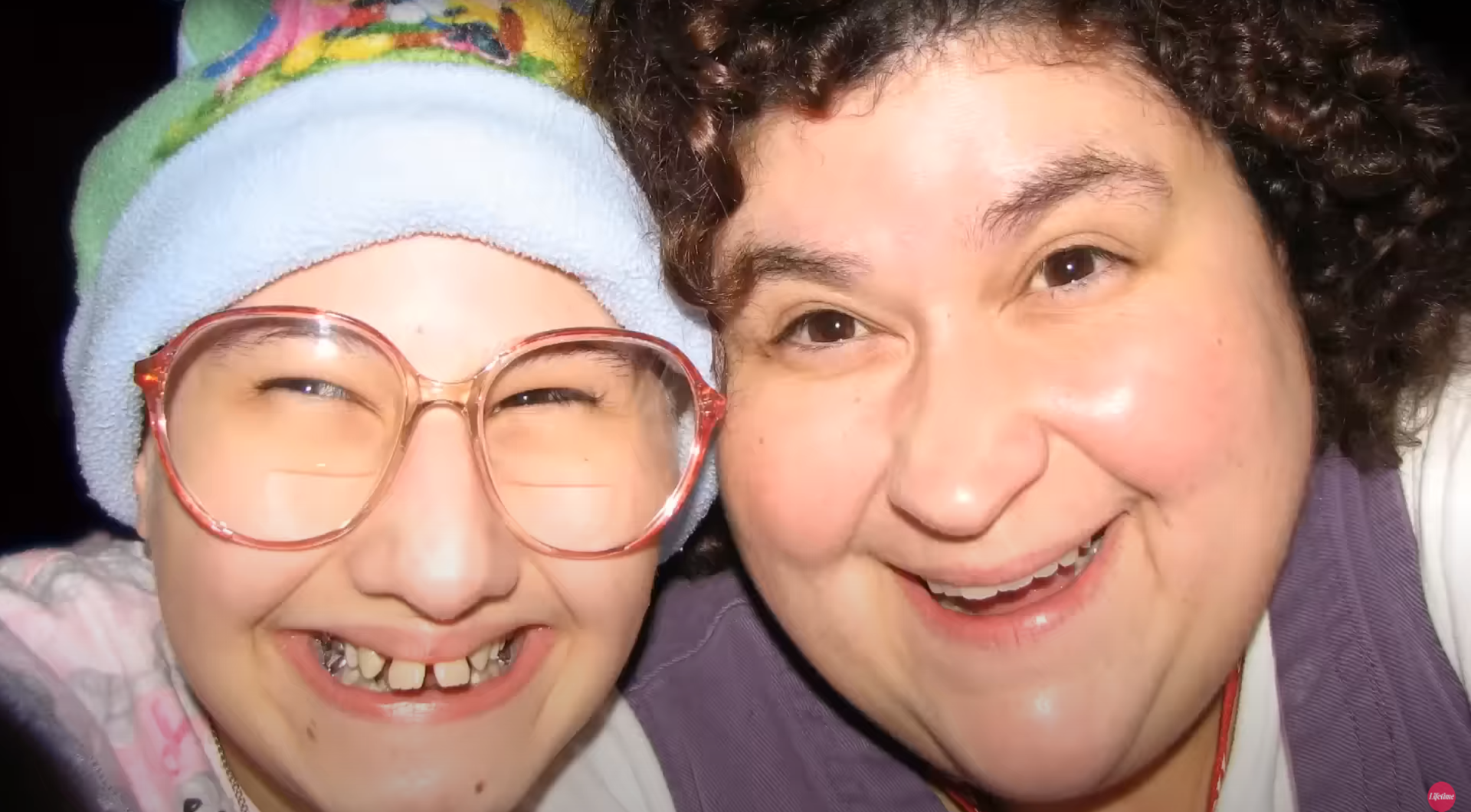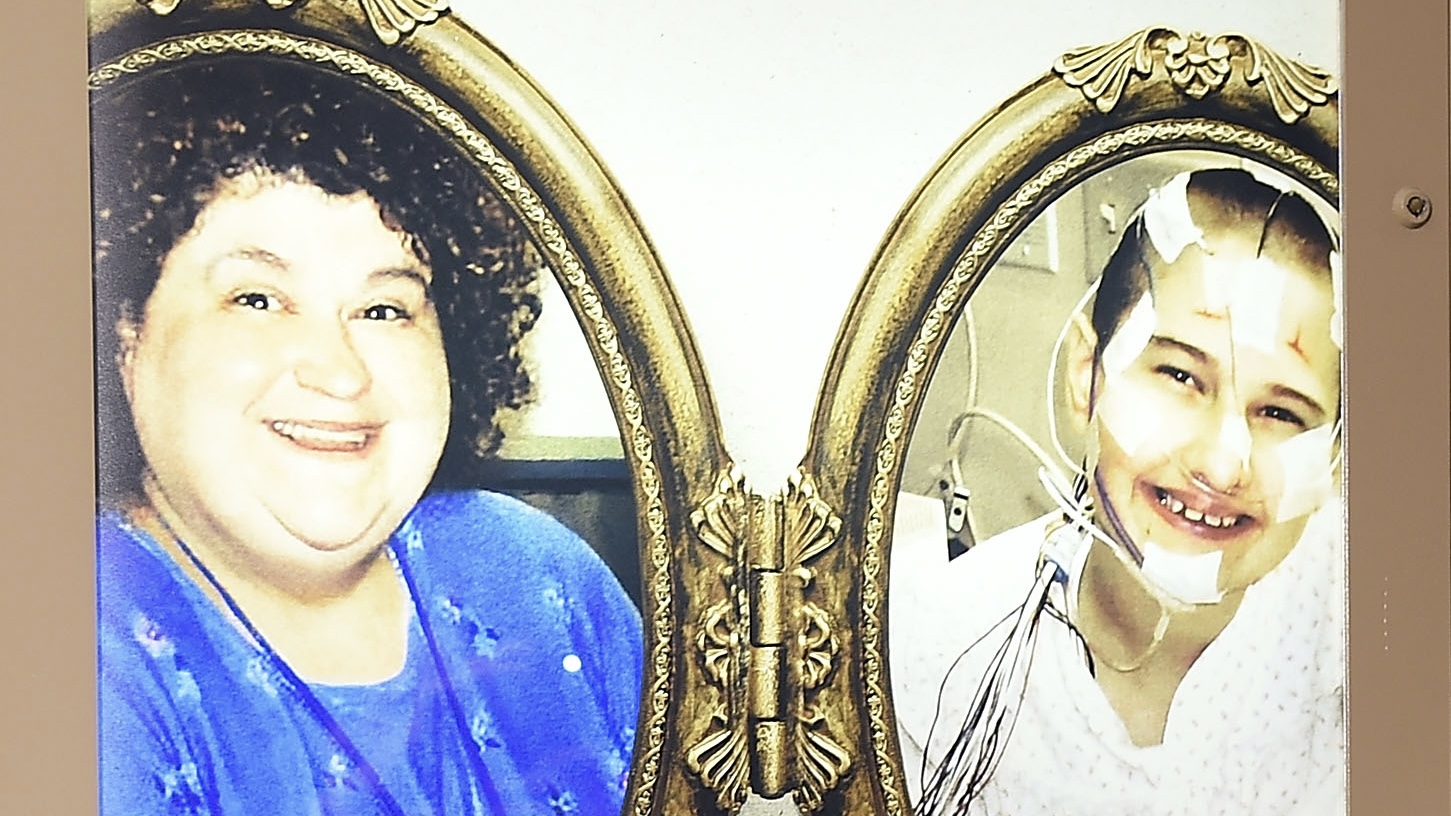There's a deep curiosity, it seems, that draws many people to stories of true events, especially those that hold a bit of a mystery or just feel quite unbelievable. We often find ourselves drawn to the very edges of human experience, looking at things that are, in some respects, hard to take in. The story of Gypsy Rose Blanchard, and the circumstances surrounding her mother's passing, is one such account that has truly captured the public's attention, making people wonder about so much that happened.
This particular case, involving Dee Dee Blanchard and her daughter, Gypsy Rose, brought to light a rather unsettling situation, a complex web of deceit and illness that eventually led to a shocking end. For a long time, it seemed like a tale of a mother caring for a child with many health problems, but then, as a matter of fact, the truth began to surface, revealing something quite different underneath it all. People everywhere started to pay close attention, wanting to get a sense of what truly transpired.
With such intense interest, it's perhaps no surprise that folks often search for details that might offer a more complete picture, or, you know, just satisfy a certain kind of curiosity. Sometimes, this search extends to very sensitive materials, like crime scene photographs, which some people believe could shed more light on the events. The thought of seeing such images related to the Gypsy Rose mother's crime scene photos is, to be honest, something that many have pondered, even if they're not really available for public viewing.
Table of Contents
- The Story of Gypsy Rose Blanchard - A Brief Overview
- Why the Fascination with Crime Scene Photos?
- Are These Images Even Real?
- What Are the Ethical Considerations?
- Legal Aspects and Public Access
- The Human Cost of Such Events
- Moving Beyond the Graphic Details
- A Different Kind of Story
The Story of Gypsy Rose Blanchard - A Brief Overview
The tale of Gypsy Rose Blanchard really does stand out as a rather striking example of a rare kind of abuse. For years and years, her mother, Dee Dee Blanchard, made everyone around them believe that Gypsy Rose was suffering from a whole host of very serious illnesses, like leukemia, muscular dystrophy, and many other conditions that seemed to keep her in a wheelchair and needing constant care. Dee Dee, it seemed, was always there, a dedicated parent, a real figure of devotion in the eyes of neighbors and friends. She took Gypsy Rose to countless doctor visits, always telling the medical staff about new symptoms and making sure Gypsy Rose received various treatments and operations. This went on for, you know, a very long stretch of time, creating a life for Gypsy Rose that was, in a way, entirely controlled by her mother's fabricated stories. It was a situation that, basically, fooled everyone who came into contact with them, leading to a lot of sympathy and help from charities and the wider community.
Personal Details and Background
To get a better picture of Gypsy Rose's life, it helps to look at some basic information. This kind of overview can, in some respects, give us a bit of a foundation for what happened later on. Her story is very much tied to the home life she experienced, which was, apparently, nothing like what it seemed from the outside looking in. The truth about her situation was, in fact, hidden for so long, making her background quite unique and rather unsettling once everything came to light. It's a personal history that is, basically, hard to forget once you hear about it.
| Full Name | Gypsy Rose Blanchard |
| Birth Year | 1991 |
| Mother's Name | Clauddine "Dee Dee" Blanchard |
| Known For | Victim of Munchausen by Proxy, later convicted in her mother's passing |
| Key Event | The passing of Dee Dee Blanchard in 2015 |
Gypsy Rose's early life was, in a way, marked by this constant pretense of sickness. Her mother, Dee Dee, had what some medical professionals later called Munchausen by Proxy syndrome, a condition where a caregiver makes up or causes an illness in a person under their care. This meant Gypsy Rose was, as a matter of fact, subjected to unnecessary medical procedures, medications, and a life confined to a wheelchair, all because her mother wanted to appear as a devoted caregiver. She was not allowed to go to school, nor was she really permitted to interact with other children her age without Dee Dee's close watch. This isolation and the manufactured illnesses truly shaped her world, making her life very different from what most people experience growing up. It was, you know, a truly isolated existence, quite literally cut off from so much that is normal for a young person.
Why the Fascination with Crime Scene Photos?
It's a curious thing, isn't it, how many people find themselves drawn to the raw, unfiltered parts of a crime story? There's something about these events that, in a way, holds our gaze, making us want to see every bit of what happened. Perhaps it's a desire to understand the truth more completely, to piece together the events as they actually unfolded. Or maybe it's just a natural human response to something shocking, a feeling of wanting to look at the very edges of what people are capable of, both good and bad. This draw to the stark reality of a situation, especially one that involves a great deal of suffering or violence, is something that, as a matter of fact, has been observed in human nature for a very long time. It can be a bit unsettling, this pull, but it's also, arguably, a part of how we try to make sense of the world around us.
The Public's Interest in Gypsy Rose Mothers Crime Scene Photos
When it comes to a case like Gypsy Rose's, the public's interest in things like Gypsy Rose mother's crime scene photos seems to be especially strong. This is, perhaps, because the story itself is so far outside the usual, so unlike what we might expect from a family. The layers of deception, the years of abuse, and then the shocking outcome – it all creates a narrative that is, frankly, hard to fully grasp without wanting to see every possible piece of information. People often feel that if they could just see the images from the scene, they might get a clearer picture of the severity of the situation, or, you know, just confirm the reality of it all. This desire for visual confirmation is a very common human trait, especially when a story feels so unbelievable. It's almost as if seeing it with your own eyes makes it more real, more tangible, even if those images are deeply upsetting. This curiosity, you know, tends to be a powerful force.
Are These Images Even Real?
In our current times, where information spreads at a truly rapid pace, it can be quite a challenge to tell what's true from what's not. When a high-profile case like Gypsy Rose's captures so much attention, rumors and unverified claims tend to pop up all over the place, especially online. People might share things they've heard or seen, without really checking if they're accurate. This means that when you hear talk of, say, crime scene images, it's really important to approach that information with a good deal of care. Many times, what people claim to be genuine photos are, in fact, fakes, or they might be pictures from a completely different event. It's a bit like a game of telephone, where the original message gets changed as it passes from person to person. So, you know, it's always a good idea to question what you see and hear, especially when it comes to sensitive topics.
Separating Fact from Fiction Around Gypsy Rose Mothers Crime Scene Photos
When discussing Gypsy Rose mother's crime scene photos, it becomes quite clear that separating what is actually true from what is simply made up is a very important task. Official crime scene photographs are, as a matter of fact, usually kept under very strict control. They are gathered by law enforcement as part of an investigation and are used as evidence in court proceedings. They are not, by and large, released to the public for general viewing. Any images that claim to be these specific crime scene pictures and are easily found online are, therefore, highly suspect. They could be entirely fabricated, or they might be images from other unrelated cases that have been mislabeled. The internet, you know, is full of things that are not what they seem. It's a space where false information can spread very quickly, making it hard for people to discern what's real. So, a healthy dose of skepticism is, basically, always a good thing when you come across such claims.
What Are the Ethical Considerations?
Even if such images were to exist and somehow become available, there's a very serious question we should ask ourselves about whether viewing or sharing them is really the right thing to do. When a terrible event happens, there are real people involved, people who are experiencing deep pain and loss. Displaying or seeking out graphic pictures of such moments can, in a way, add to their suffering. It can feel like a violation of their privacy and their dignity, especially when they are already going through so much. There's a human element here that, arguably, often gets overlooked in the rush to see or know everything. We have a responsibility, you know, to think about the impact of our actions, even when those actions are just looking at something on a screen. It's about showing respect for the people who have been affected by these very difficult situations.
Looking at the Impact of Sharing Gypsy Rose Mothers Crime Scene Photos
Thinking about the possible impact of sharing Gypsy Rose mother's crime scene photos really brings up some significant concerns. For Gypsy Rose herself, who has already lived through so much, having such images circulated could cause even more emotional distress. It would be a constant reminder of a deeply traumatic event, something that, as a matter of fact, she is trying to move beyond. For the family members and friends of Dee Dee Blanchard, seeing such pictures would, obviously, be incredibly painful and disrespectful to her memory. Beyond the immediate individuals, the widespread sharing of graphic content can also, in a way, desensitize the public to the true gravity of violence and suffering. It can turn real human tragedy into something that is just consumed for curiosity, which is, basically, not a very healthy way to approach these kinds of events. We should, perhaps, think about the broader message we send when we prioritize sensationalism over compassion.
Legal Aspects and Public Access
When a serious event takes place, especially one that leads to a court case, a lot of evidence is gathered by the authorities. This includes things like photographs taken at the scene. These images are, in fact, part of the official record, but they are not generally made available for just anyone to see. They are used by police investigators, lawyers, and judges to understand what happened and to present a case. There are very specific rules about who can access this kind of material, and it's usually limited to those directly involved in the legal process. The privacy of victims and the integrity of the investigation are, you know, very important considerations. So, it's pretty rare for these types of sensitive pictures to become public, unless they are shown in open court as part of the proceedings, and even then, their distribution is typically controlled. This is a system that, basically, tries to balance the need for justice with the need for privacy and respect.
The Human Cost of Such Events
While the discussion around specific images can be compelling, it's really important to remember the very real human cost behind these kinds of stories. The case of Gypsy Rose Blanchard is not just a collection of facts or a thrilling narrative; it's about a young person who experienced years of severe abuse and, as a result, made choices that led to a truly tragic outcome. Her life was, in a way, shaped by unimaginable circumstances, and the passing of her mother left a lasting mark on many people. Focusing too much on the sensational or graphic parts can, arguably, distract from the deeper issues at play, such as the nature of chronic abuse, mental health struggles, and the failures of systems meant to protect vulnerable individuals. It's a reminder that behind every headline, there are people with complex lives and very deep feelings. We should, perhaps, try to look beyond the surface and consider the profound effects these events have on everyone involved.
Moving Beyond the Graphic Details
For those who are interested in the Gypsy Rose case, there's a much richer and more meaningful way to engage with the story than just seeking out any graphic details. The true value in understanding this situation lies in exploring the psychological aspects, the social dynamics, and the broader lessons we can learn about recognizing abuse and providing support. There are many documentaries, books, and interviews that offer deep insights into Gypsy Rose's experiences, her perspective, and the various factors that led to the events. These resources allow for a more thoughtful and, you know, a more compassionate look at what happened, without resorting to sensationalism. It's about understanding the nuances of human behavior and the very real consequences of certain actions, rather than just focusing on the shock value. This approach, basically, helps us to learn and grow, instead of just being entertained by tragedy.
A Different Kind of Story
Ultimately, the story of Gypsy Rose Blanchard is, in a way, a powerful account of survival and the desperate measures one might take when pushed to an absolute limit. It's a story that prompts us to think about the hidden struggles that some people face and the importance of looking beyond what appears on the surface. While the curiosity about things like Gypsy Rose mother's crime scene photos might be natural for some, the real heart of the narrative lies in the complex human drama, the years of deception, and the eventual, tragic breaking point. It's a narrative that, as a matter of fact, forces us to confront uncomfortable truths about abuse and the lengths to which a person might go to escape a truly terrible situation. This case, you know, continues to spark conversations about very serious topics, and that, arguably, is where its true impact lies.
The Gypsy Rose Blanchard case remains a truly compelling and deeply unsettling story, one that has captured the attention of many people across the world. From the years of fabricated illness and the profound abuse Gypsy Rose endured at the hands of her mother, Dee Dee, to the shocking events that brought the truth to light, it is a narrative filled with layers of complexity. While there is a natural human inclination to seek out every detail, including, for some, the very graphic, such as crime scene photographs, it is important to remember the ethical considerations involved. These official images are not typically available to the public and any claims of their widespread presence should be viewed with a good deal of skepticism. The real significance of Gypsy Rose's story lies not in sensational details, but in its profound lessons about recognizing abuse, understanding human behavior under extreme duress, and the lasting impact of trauma on individuals and families. It is a story that, at its core, speaks to survival and the often hidden struggles that can exist within what seems like a normal family.


